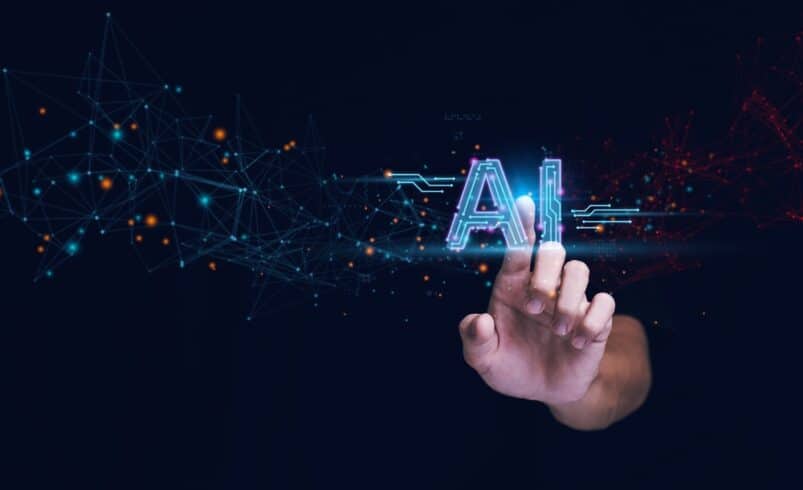Comprehensive Guideline to Understand Algorithm of Thoughts (AoT)

The algorithm of thought (AoT) is a groundbreaking strategy in artificial intelligence (AI) that changes how artificial intelligence models reason and think. It unveils a new model for large language models (LLMs) to address intricate issues using improved reasoning capabilities.
AoT seeks to combine the best of both worlds. This includes the intuitive and refined comprehension of human thought processes with the systematic and organized nature of algorithmic methodologies.
Algorithm of Thoughts (AoT) Concept Explained
AoT differs from earlier strategies that depended on outside interventions to guide large language models through reasoning stages. Instead, it exploits LLMs’ intrinsic capabilities to explore an issue space by imitating humanlike thinking trends.
The image demonstrates various approaches for addressing reasoning issues with large language models. It reflects the progression from essential promoting to more intricate strategies that are explained below:
Basic prompting: This entails direct questioning of the LLM or offering it a task.
Chain of thoughts (CoT): LLM develops a series of intermediate reasoning stages before reaching a final answer.
Tree of thoughts (ToT): LLM explores several reasoning paths concurrently, assessing every path and picking the most favorable one to continue.
Algorithm of thoughts (AoT): Merges ToT and CoT, utilizing algorithms to search and assess various reasoning paths methodically.
Essentially, AoT allows artificial intelligence models to navigate via a vast landscape of possibilities, identical to how people brainstorm and polish ideas to create solutions. The strategy has demonstrated considerable promise in enhancing LLMs’ performance on different reasoning tasks.
How Does AoT Outperform Current Approaches?
AoT is a revolutionary approach in artificial intelligence, basically altering how people comprehend and use large language models. Its dominance over conventional models is most apparent in its converted reasoning process.
AoT enhances the process’s transparency, offering a step-by-step breakdown of the model’s thoughts. Besides the transparency, AoT considerably enhances LLM’s efficacy.
AoT imitates humanlike thinking in artificial intelligence models via the dynamic alteration of the reasoning process founded on context, permitting the model to discover several paths and prune the ones with less promise.
Real-world Applications of AoT
AoT can hasten the discovery of new treatments and drugs by aiding in assessing intricate biological information and discovering potential therapeutic targets. Concerning software development, AoT can change how code is written and debugged. It can also boost code quality and productivity.
AoT’s potential extends to other fields and industries. Its capability to evaluate significant data amounts and generate insights can enhance efficacy and innovation.
Challenges and Limitations of AoT
A significant concern linked to AoT is the potential for added computational costs due to exploring several reasoning paths. Besides, AoT’s dependence on chain-of-thought promoting and in-context learning can be sensitive to the relevance and quality of the offered examples, affecting its total performance in case the examples are insufficient.
The assessment of AoT’s performance can be complicated because of the subjectivity inherent in humanlike reasoning.
Ethical Considerations and Obstacles in AoT Implementation
A primary concern entails the potential for misuse, in which AoT can be exploited to generate harmful or misguiding content, such as propaganda and deepfakes. The capability to imitate humanlike reasoning could be leveraged to develop content that is hard to differentiate from the genuine human output, resulting in possible manipulation and deception.
There is also the problem of accountability and responsibility. With the incorporation of AoT into decision-making processes, questions arise concerning who is responsible for the outcomes and actions of AoT-enhanced systems.
Future of AoT
AoT’s future holds significant promise, with the capability to change the landscape of artificial intelligence and its application across diverse domains. With advancements in research and technology, various exciting developments will be witnessed.
AoT is poised to transform decision-making and problem-solving processes across several sectors. By enabling artificial intelligence models to explore several reasoning paths and dynamically change their strategies, AoT can address intricate issues that were earlier past the reach of conventional algorithms.
AoT’s future also entails the responsible and ethical utilization of the robust tool. It is critical to address issues concerning transparency, bias, and accountability.
DISCLAIMER: It's essential to understand that the content on this page is not meant to serve as, nor should it be construed as, advice in legal, tax, investment, financial, or any other professional context. You should only invest an amount that you are prepared to lose, and it's advisable to consult with an independent financial expert if you're uncertain. For additional details, please review the terms of service, as well as the help and support sections offered by the provider or promoter. While our website strives for precise and impartial journalism, please be aware that market conditions can shift unexpectedly and some (not all) of the posts on this website are paid or sponsored posts.









